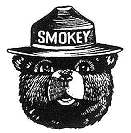U.S. Department of Agriculture: Forest Service -- National Agroforestry Center
Document Type
Article
Date of this Version
2009
Citation
Can. J. Remote Sensing, Vol. 35, No. 5, pp. 447–459, 2009.
Abstract
A common challenge when comparing forest canopy cover and similar metrics across different ecosystems is that there are many field- and landscape-level measurement methods. This research conducts a cross-comparison and evaluation of forest canopy cover metrics produced using unmixing of reflective spectral satellite data, light detection and ranging (lidar) data, and data collected in the field with spherical densiometers. The coincident data were collected across a ~25 000 ha mixed conifer forest in northern Idaho. The primary objective is to evaluate whether the spectral and lidar canopy cover metrics are each statistically equivalent to the field-based metrics. The secondary objective is to evaluate whether the lidar data can elucidate the sources of error observed in the spectral-based canopy cover metrics. The statistical equivalence tests indicate that spectral and field data are not equivalent (slope region of equivalence = 43%). In contrast, the lidar and field data are within the acceptable error margin of most forest inventory assessments (slope region of equivalence = 13%). The results also show that in plots where the mean lidar plot heights are near zero, each of modeled remotely sensed estimates continues to report canopy cover >21% for lidar and >30% for all investigated spectral methods using near-infrared bands. This suggests these metrics are sensitive to the presence of herbaceous vegetation, shrubs, seedlings, saplings, and other subcanopy vegetation.

